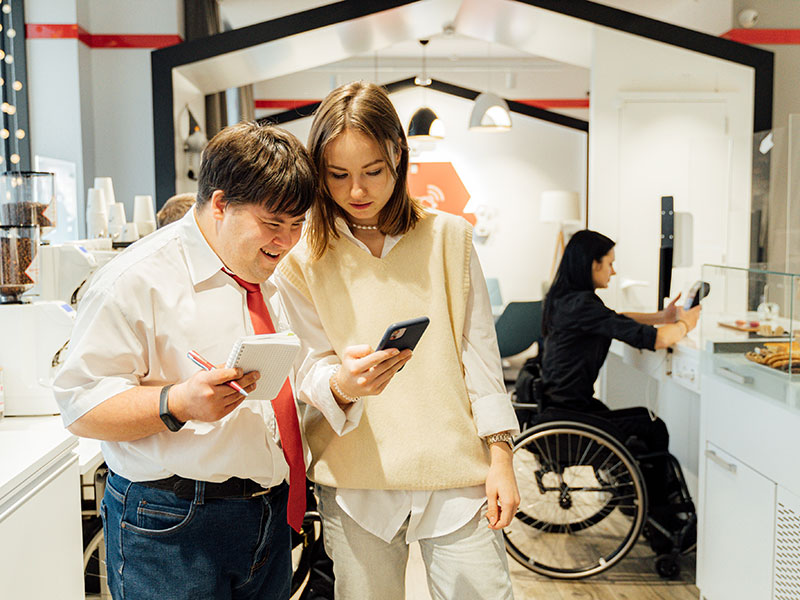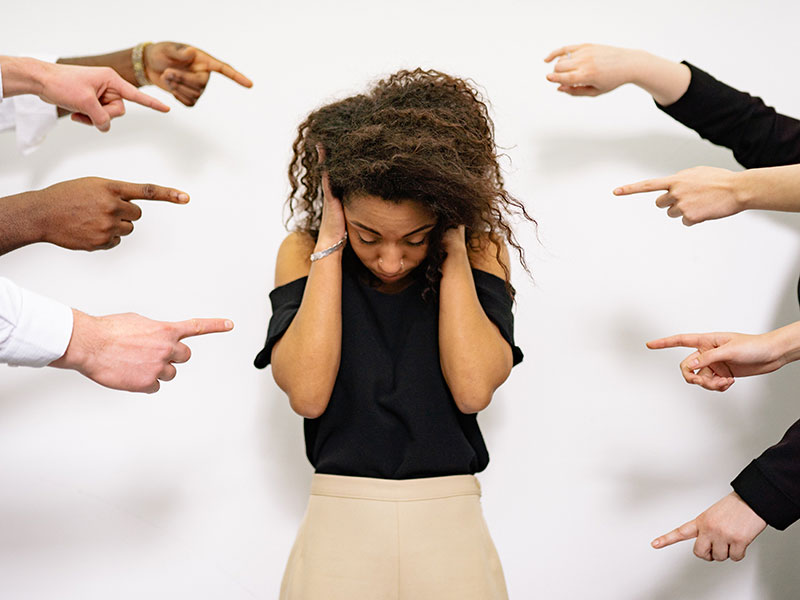Microaggressions

What are microaggressions?
Microaggressions are the everyday verbal, nonverbal and environmental slights, snubs or insults targeted towards people from marginalized groups based on race, gender, sexual orientation, disability status, religious affiliation or other perceived characteristic.


Whether intentional or unintentional, they communicate hostile, derogatory or negative messages that demean a person or a group’s humanity.
Read further to better understand everyday interpersonal microaggressions, some of which are related to broader policies and environmental cues.
What are the types of microaggressions?
| Type of microaggressions | Example |
|---|---|
| Microinequities are overt and discriminatory. They can be explicit verbal or nonverbal attacks intended to hurt a victim based on their identity or identities shown through name calling, avoidant behaviour or purposeful discriminatory actions. | Deliberately servicing a White patron first before a racialized person. |
| Microassaults are subtle forms of rude or insensitive communication–usually not recognized as such by a perpetrator–that demean a person’s identity or identities. They can be considered as back-handed compliments. | Telling a racialized person born in Canada that their “English is really good.” |
| Microinvalidations are communications that discredit the thoughts, feelings or experiences of people from marginalized groups. They can also be actions that result in exclusion and a lack of belonging. | A racialized person tells their White friend about a situation where they felt discriminated against and are told to “stop being so sensitive.” The absence of Black narratives in curriculum. |
The themes of a specific microaggression vary depending on the targeted group or person. Here are some examples of common microaggression themes against specific groups of people:
| Theme | Microaggression | Message |
|---|---|---|
| Alien in one’s land |
|
|
| Ascription of intelligence |
|
|
| Colour blindness |
|
|
Criminality–assumption of criminal status |
|
|
Denial of individual racism/sexism |
|
|
| Ableism |
|
|
| Myth of meritocracy |
|
|
| Pathologizing cultural values and communication styles |
|
|
| Second-class citizen |
|
|
| Sexist/heterosexist language |
|
|
| Traditional gender role prejudicing and stereotyping |
|
|
How can microaggressions cause harm?
Microaggressions create inequities in society that leave people from marginalized groups at a disadvantage. They are not just simple comments that put another person down. They are targeted comments or actions in response to someone’s perceived identity.


Microaggressions are a form of constant and continual harm against people from marginalized groups that occur throughout their lives.
Microaggressions are cumulative and create conflict and dilemmas for people from marginalized groups. Because they occur so often, they create labour as they are continually deciphered. Studies have shown that this impacts people’s productivity, concentration and well-being.

How can we address microaggressions?

- Assume that you have your own biases. None of us were raised without inheriting some racial, gender or sexual orientation biases from the previous generations.
- Speak out when microaggressions occur. Simply acknowledging a microaggression does not delegitimize it.
- Acknowledge and understand your own privilege. Some of us hold and yield power differently based on our social location, and those with more power over others must move towards systemic action that helps combat these inequities.
- Recognize the importance of education. Whether through self-education or by promoting education for children and teens in school, preventing implicit biases can be done through intentional, anti-biased and multicultural curriculums.


- Do not shy away from discomfort when listening to the lived experiences of people who are different from you.
- Acknowledging, understanding and supporting other people’s differences from you will help legitimize their experience and also help you achieve insights about yourself that will strengthen your solidarity.
How can we confront microaggressions?
Safety comes first. So before confronting microaggressions, ensure that you are safe and that it is safe to do so.
Make the invisible visible
- undermine the offender’s action
- point out the offender’s action
- challenge the stereotype
- broaden the ascribed trait to a universal human behaviour
- ask for clarification
Disarm the microaggression
- express disagreement
- state values and set limits against the offender
- describe what is happening out loud
- interrupt and redirect
Educate the offender
- point out the commonality
- appeal to the offender’s values and principles
- differentiate between intent and impact
- promote empathy
- point out how the offender benefits
Seek external validation
- alert authorities
- report the act
- seek therapy/counselling
- seek support through spirituality, religion, community or support group
- set up a buddy system
Self-educate to learn more
Microaggressions in Everyday Society with Dr. Sue
Watch this event: Microaggressions in Everyday Society with Dr. Sue (February 2015)
In, Dr. Derald Wing Sue joined Dr. Denise O'Neil Green for an interactive conversation about best practices and strategies for disrupting microaggressions in postsecondary education and society.
About Dr. Sue
Dr. Sue is Professor of Psychology and Education at Columbia University. He is one of the foremost authorities and scholars in the areas of microaggressions, multicultural counselling and psychotherapy, psychology of racism and antiracism, cultural diversity, cultural competence and multicultural organizational development.
Unpacking microaggressions series in TMU Today
Books for kids
- All the Colours We Are by Katie Kissinger (external link)
- IntersectionAllies: We Make Room for All by Chelsea Johnson, LaToya Council, and Carolyn Choi and forward by Kimberlé Crenshaw (external link)
- Just Ask! Be Different, Be Brave, Be You by Sonia Sotomayor (external link)
- Thirteen Ways of Looking at a Black Boy by Tony Medina (external link)
Books for teens
- How to Fight Racism Young Reader's Edition by Jemar Tisby (external link)
- Rising Troublemaker: A Fear-Fighter Manual for Teens by Luvvie Ajayi Jones (external link)
- Stamped: Racism, Antiracism, and You by Jason Reynolds and Ibram X. Kendi (external link)
Resources for adults
- 3 Simple Steps to Stop a Microaggression (external link)
- Blindspot: Hidden Biases of Good People by Mahzarin Banaji and Anthony Greenwald (external link)
- Discussion Card Kit: Let’s Learn to Respond (external link)
- Microaggressions in Everyday Life: Race, Gender, and Sexual Orientation by Dr. Derad Wing Sue (external link)
- (PDF file) Microaggression: More Than Just Race by Dr. Derald Wing Sue (external link)
- Subtle Acts of Exclusion: How to Understand, Identify, and Stop Microaggressions by Michael Baran and Tiffany Jana (external link)
References
Rini, R. (2021). The ethics of microaggression. Routledge.
Sue, D. W., & Spanierman, L. (2020). Microaggressions in everyday life (Second; 2nd; ed.). John Wiley & Sons.
Sue, D. W., Capodilupo C.M., Torino G.C., Bucceri J.M., Holder A.M., Nadal K.L., Esquilin M. Racial microaggressions in everyday life: implications for clinical practice. Am Psychol. 2007 May-Jun;62(4):271-86. doi: 10.1037/0003-066X.62.4.271. PMID: 17516773.